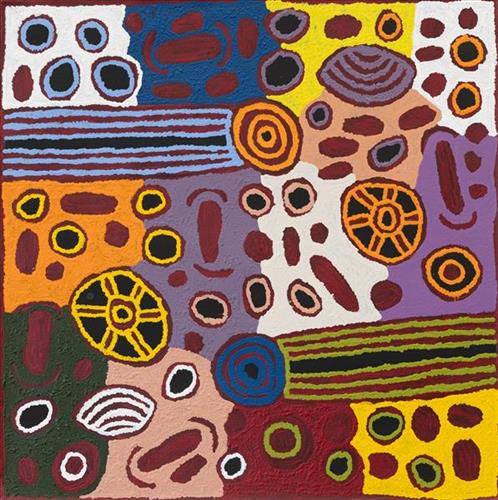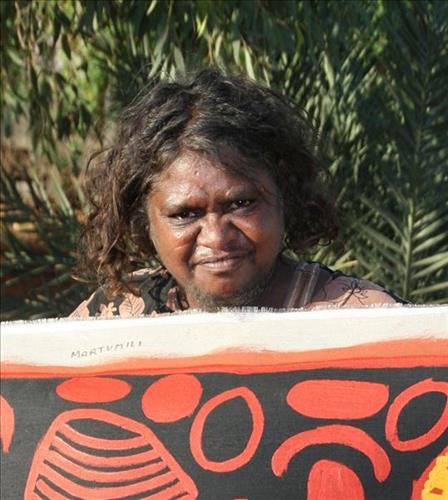111582217329
Ngami
“Ngami got no lake, only got a stone. That’s the ladies, the Seven Sisters sitting down. That’s a Jukurrpa (Dreaming) story from the old people. Man chasing all the ladies, Seven Sisters. That’s my grandmother’s story, that’s her place. She told me that story when I was a big lady.”
– Roma Gibson
Ngami is the birthplace for Roma’s grandmother, and as such forms a crucial part of her ngurra (home Country, camp).
Ngami also features as a site in the Minyipuru (Jakulyukulyu, Seven Sisters) Jukurrpa (Dreaming). The term Jukurrpa is often translated in English as the ‘dreaming’, or ‘dreamtime’, and refers generally to the period in which the world was created by ancestral beings in both human and nonhuman forms. These beings shaped what had been a formless landscape; creating waters, plants, animals, and people. At the same time they provided cultural protocols for the people they created, as well as rules for interacting with the natural environment. At their journey’s end, the ancestral beings transformed themselves into important waters, hills, rocks, and even constellations. As Roma describes, the Seven Sisters can still be seen at Ngami today as a striking group of rocks.
Minyipuru is a key creation narrative for Martu, Ngaanyatjarra, Pitjantjatjara and Yankunytjatjara people that is associated with the seasonal Pleiades star constellation. Beginning in Roebourne on the west coast of Western Australia, the story morphs in its movement eastward across the land, following a group of women as they walk, dance, and even fly from waterhole to waterhole. As they travel the women camp, sing, wash, dance and gather food, leaving markers in the landscape and creating landforms that remain to this day, such as the grouping of rocks described here by Linda. During the entirety of their journey the women are pursued by a lustful old man, Yurla, although interactions with other animals, groups of men, and spirit beings are also chronicled in the narrative.




